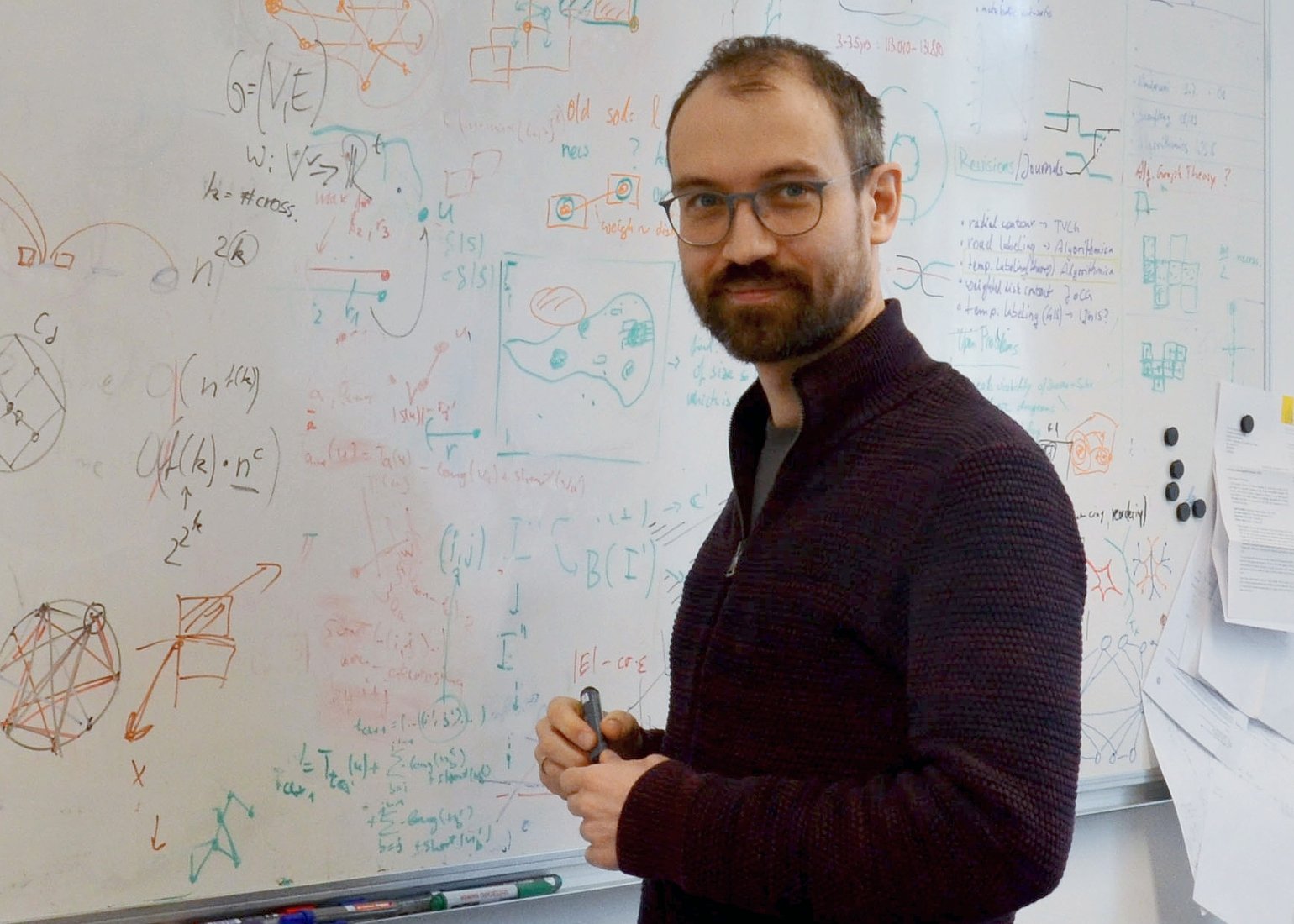#5QW: Martin Nöllenburg
In his youth, Martin scraped together all his savings to buy his first Amiga computer. Today, he creates algorithms that help people in their everyday lives.

About
Martin Nöllenburg is Associate Professor at the Algorithms and Complexity research unit and especially interested in Graph Drawing, Network Visualization, and Computational Cartography. He is fascinated by fundamental algorithmic problems, but apart from investigating theoretical questions he likes to develop algorithms that are helpful for people in every-day life.
How did you get in touch with Informatics?
My first contact was not with Informatics but with computers. In the early 1990s, my friends had computers, and it was always fascinating to play with this new electronic toy. Later on, when I was about 14 years old, I used all my savings to buy my first Amiga computer. So, the first fascination came from playing games. Soon after, I got interested in understanding the hardware, how the computers were built, what were the individual parts inside. I started to build my own hardware and combined things and learned more about it. Still, until the end of my high school time, I thought of computers as a hobby. When I began to think of different study options, I tended towards mathematics, because it was my favorite subject in school. I went to an orientation day at the University of Heidelberg for a presentation by some mathematicians closely collaborating with computer scientists. They presented work for optimizing certain processes for a chemical company, and I said, “wow, this is cool – and this is computer science? Maybe this is interesting”, and at that moment I decided to study Informatics.
What makes Informatics so fascinating for you?
Two things are fascinating. One thing is the very technical, mathematical fascination for fundamental algorithmic problems, where you can phrase in one sentence what you want to optimize – you are given some kind of graph or network, and you are asking for a particular property. Getting the answer is difficult, and working on it is like solving logic puzzles in your childhood. You have a challenging mathematical, logical problem, and you need to become creative to solve it, employing algorithms and logic. The other fascinating thing is that computer science is opening up an entirely new toolbox and a world of things that affect our human life. Developing tools that are helpful for people out there is fascinating to me.
Which talents should people bring along for a career in Informatics?
If you are interested in Informatics, sure a fascination with computers, smartphones, and electronic devices is helpful. But to delve deeply into Informatics, you need an excellent understanding of mathematics. Logical connections between things, analyzing them, and reasoning should be of interest to you. If you are good at playing Sudoko on paper this is maybe more important than being good at playing a particular computer game. But of course, Informatics is very broad; not everyone needs to become an expert in algorithm design. Some people want to become software engineers, so you need other skills as well, like being very structured and organized. And others are working at the interface with humans, like in visualization – then you need a good understanding of how people work with electronic devices and machines. Also, artistic skills might be useful when you design interfaces. It is a vast field, but if you dislike mathematics, I would not recommend it.
Why do you think there are still so few women in Informatics?
It’s a tricky question, maybe because the image of Informatics outside of university is quite biased. Not so many computer scientists exist in popular culture, movies, or books. And if they show them, it is often this nerdy type of person. This is probably not a very attractive role model for young girls, to become this nerd who eats pizza all the time while hacking into some systems. It would be vital to make school children aware of how broad computer science is, and understand that it is not that nerd culture only, that there are many things you can do that you would not connect with computer science at first sight. So one has to start in kindergarten: When my daughter was five, they played with little bee bots. Training of technical and computational thinking and looking behind the things, not just using them, but understanding how they work – how you can program this little bee to do its task. If such experiences continue through your entire school education, then the image of computer science may change. This is a process of many years.
Where do you see the connection between your research and every-day life?
If I need to summarize my research in one phrase, it is about algorithms for graphs and geometric information. Graphs are mathematical objects representing networks that you find in many situations in every-day life, like in a subway network or a road network. We study all kinds of algorithms that can analyze, visualize, and also generate transport networks, for example. Or in biology, one has metabolic pathways showing how the molecules in your cells collaborate. Geometric information pops up in many maps, or in your smartphone when you use Google maps: for instance, how to place the different labels of roads and places in a map is tricky. There is deep theoretical research in the background, but I like that these problems also matter for us humans.
Interview: Claudia Vitt, 2019
Discover the whole #5QW series.
Curious about our other news? Subscribe to our news feed, calendar, or newsletter, or follow us on social media.
